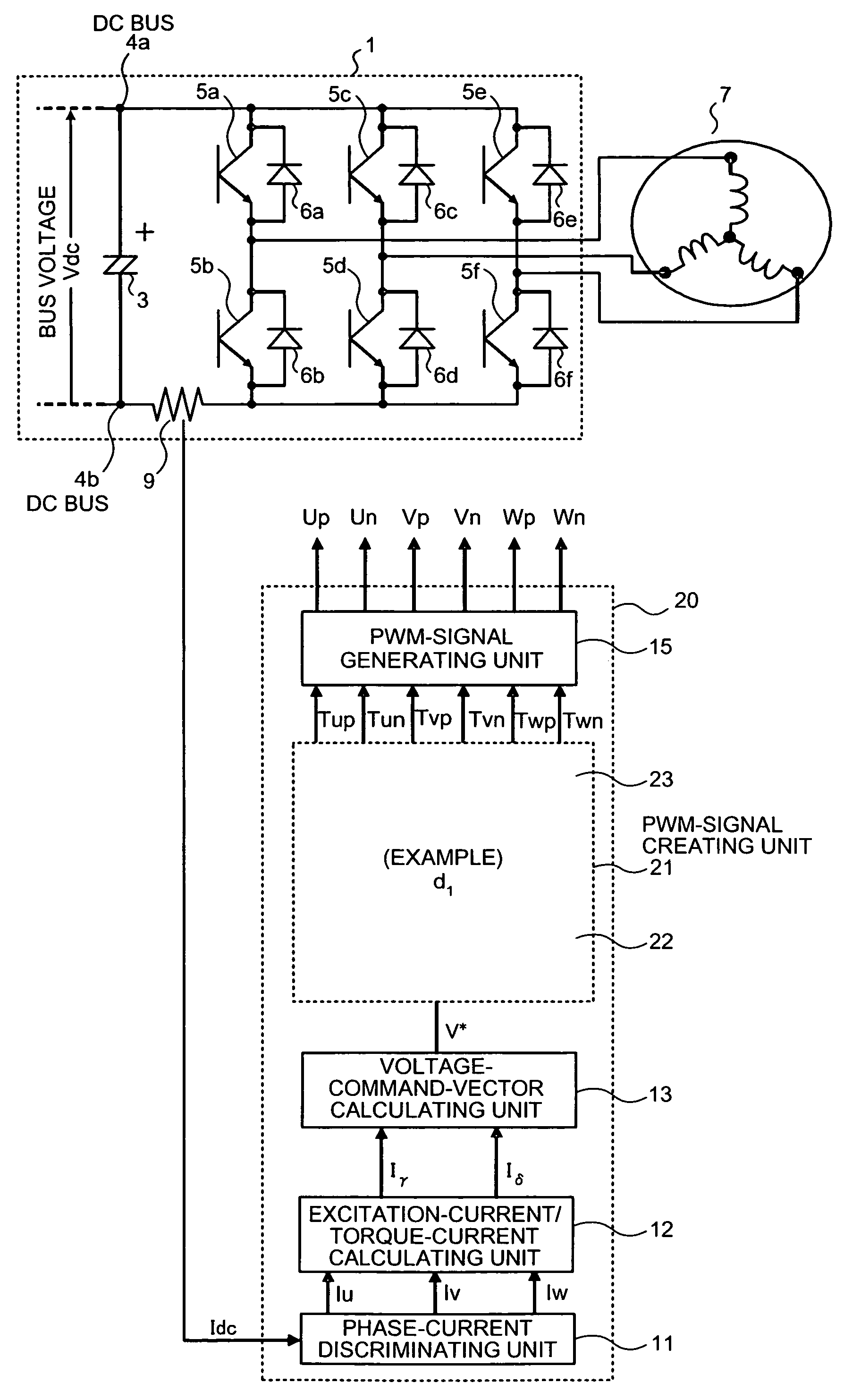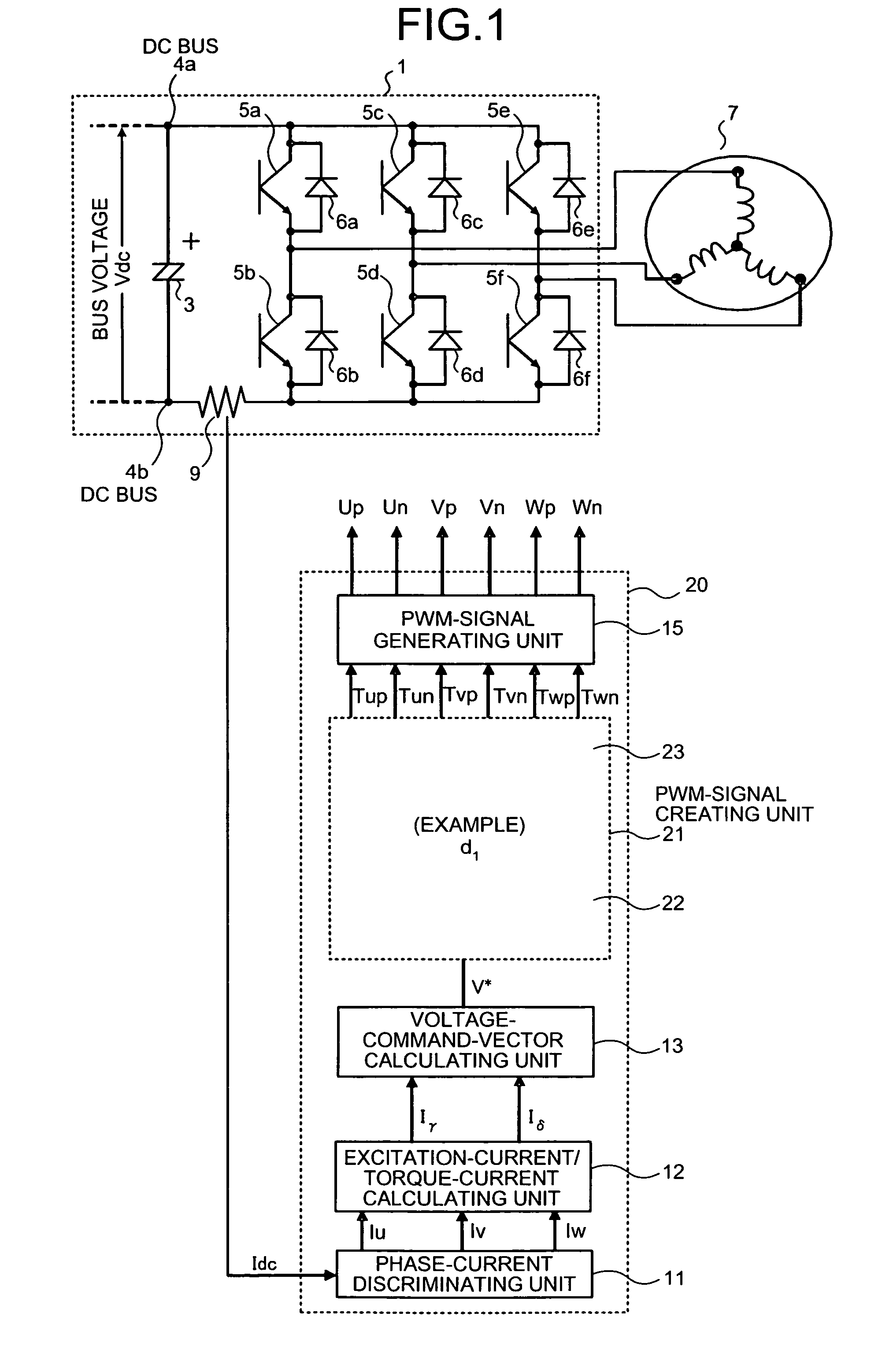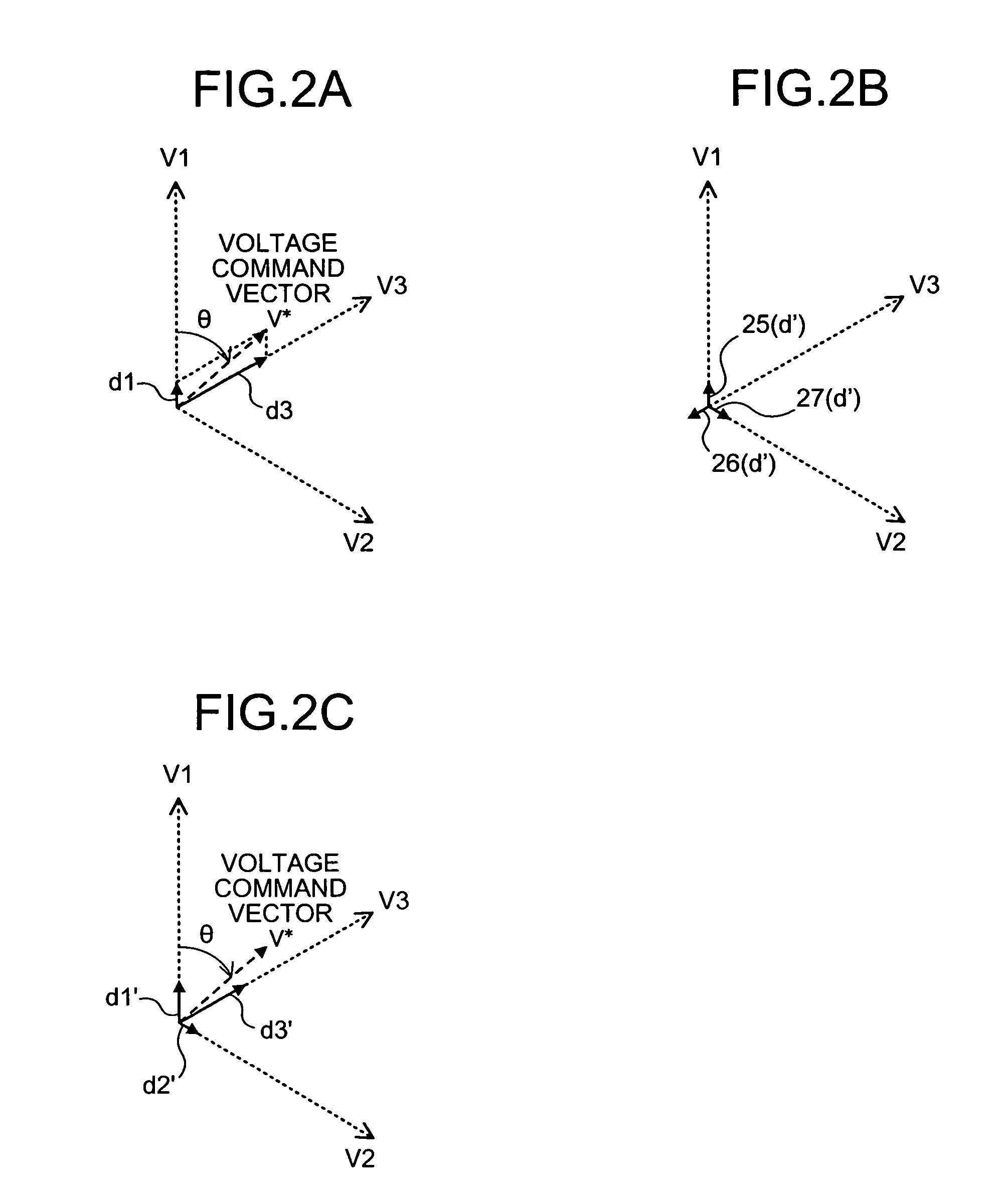Three-phase PWM-signal generating apparatus
a three-phase, signal generating technology, applied in the direction of electrical equipment, power conversion systems, ac-dc conversion, etc., can solve the problems of significant controllability degradation, achieve simple methods, reduce output voltage range limitation, and increase the holding time width of switching modes
- Summary
- Abstract
- Description
- Claims
- Application Information
AI Technical Summary
Benefits of technology
Problems solved by technology
Method used
Image
Examples
first embodiment
[0111]FIG. 1 is a block diagram of an inverter including a three-phase PWM-signal generating apparatus according to a first embodiment of the present invention. Note that, in FIG. 1, components identical with or equivalent to the components shown in FIG. 36 (the conventional example) are denoted by the identical reference numerals and signs. Sections related to the first embodiment are mainly explained here.
[0112]As shown in FIG. 1, in the first embodiment, an inverter control unit 20 is provided instead of the inverter control unit 2 in the constitution shown in FIG. 36 (the conventional example). In the inverter control unit 20, a PWM-signal creating unit 21 is provided instead of the PWM-signal creating unit 14 shown in FIG. 36 (the conventional example).
[0113]The PWM-signal creating unit 21 includes a PWM-signal-duty creating unit 22, which receives a voltage command vector V* from the voltage-command-vector calculating unit 13, and a PWM-signal-duty redistributing unit 23, whic...
second embodiment
[0151]In an inverter including a three-phase PWM-signal generating apparatus according to a second embodiment of the present invention, a PWM-signal generating unit in the three-phase PWM-signal generating apparatus corresponds to the PWM-signal creating unit 21 in the constitution shown in FIG. 1 (the first embodiment). First, an operation of the PWM-signal-duty creating unit 22 is explained briefly with reference to FIGS. 1 and 2A, although the explanation is redundant.
[0152]As explained in the first embodiment, the PWM-signal-duty creating unit 22 decomposes the voltage command vector V* from the voltage-command-vector calculating unit 13 in directions of two basic voltage vectors on both sides of the voltage command vector V* to thereby generate production time ratios of the respective basic voltage vectors. In other words, the PWM-signal-duty creating unit 22 produces two kinds of basic voltage vectors with a phase difference of 60 degrees having the production time ratios as v...
third embodiment
[0178]FIGS. 28A to 28C are graphs for explaining, in an inverter including a three-phase PWM-signal generating apparatus according to a third embodiment of the present invention, an operation of a PWM-signal generating unit in the three-phase PWM-signal generating apparatus. In the third embodiment, a PWM signal is generated by the same method as the first and the second embodiment. However, an example of a constitution in securing an operation range on a low speed side of a motor is shown in the third embodiment. To facilitate understanding, in the explanation of the second embodiment, a PWM signal is generated by the method according to the first embodiment.
[0179]In the third embodiment, in the PWM-signal creating unit 21 in the constitution shown in FIG. 1 (the first embodiment), the PWM-signal-duty creating unit 22 performs the same operation as the first embodiment. However, the PWM-signal-duty redistributing unit 23 performs an operation different from the operation in the fir...
PUM
 Login to View More
Login to View More Abstract
Description
Claims
Application Information
 Login to View More
Login to View More - R&D
- Intellectual Property
- Life Sciences
- Materials
- Tech Scout
- Unparalleled Data Quality
- Higher Quality Content
- 60% Fewer Hallucinations
Browse by: Latest US Patents, China's latest patents, Technical Efficacy Thesaurus, Application Domain, Technology Topic, Popular Technical Reports.
© 2025 PatSnap. All rights reserved.Legal|Privacy policy|Modern Slavery Act Transparency Statement|Sitemap|About US| Contact US: help@patsnap.com



